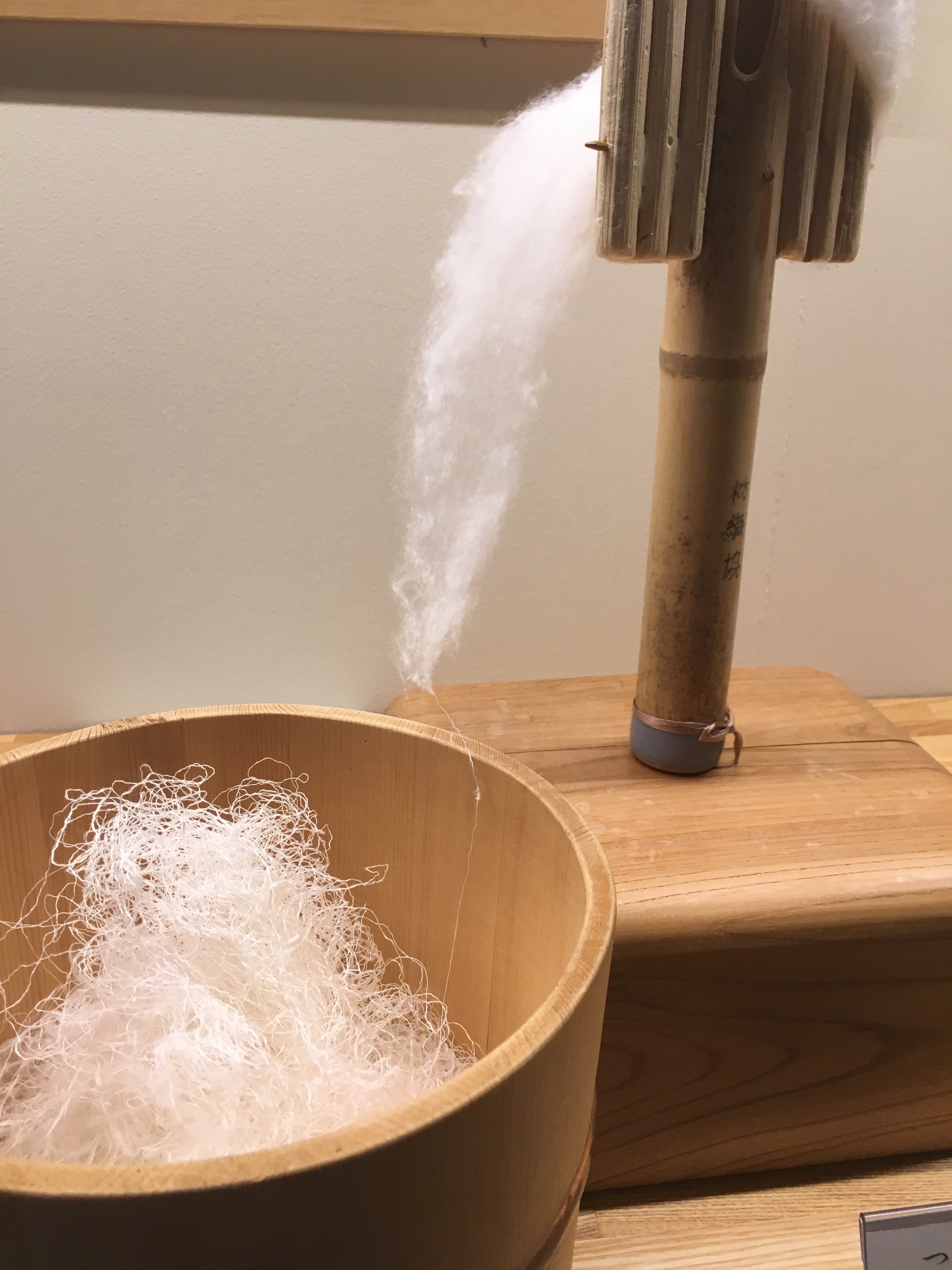We all know its that time of the year, Happy Samhainn! Chrysanthemum appear as a motif in many formats, stretched, repeat and realistic in Kimono, with the plant derived from strains created in Japan known as the Wagiku.[4] Claimed to represent longevity from drinking dewdrops that fell from the plant according to legend, the plant was first cultivated in Chinese gardens around 1500 BCE (3500 years ago).[2] Today they come in pink, purple, red, yellow, bronze, orange or white and represent the colour of autumn in Japan.[3] These patterns are the Kiku-bishi (square Kiku), Kiku-no-maru (floral circles), Kiku-zukushi (spider Kiku floral arrangements) and Kiku Sui (Kiku in water) motif first used circa 1330.[3] All Chrysanthemum originate from the Daisy genus.
The history begins with the Nara period when the plant was imported from China around 600 CE. Around the time of the Heian period, it began to appear as a heavily important symbol among the aristocrats. The Heian court would hold Sechie parties where it was customary to drink Kiku-Sake (Chrysanthemum infused wine) for example.[3] The first emperor of the Minamoto Shogunates' rule, Emperor Gotoba adopted the flower to bolster his claim to the throne which otherwise belonged to the previous child emperor, Antoku, in 1183. This happened again in 1333 when in an attempt to differentiate the North and South imperial courts, Go-Daigo adopted a 17 petal version in opposition to that of Kougun.[1] During the Edo period, Kimono began to incorporate Kiku onto textiles.[3]
In the Edo period, it began became popular along with cherry blossom, to cultivate Kiku to admire them in groups. The fruits of this labour are known as the Kotengiku (Classic type) crop of which are the Atsumono (Broad blooms), Kudamono (Spider Kiku), and Ichimonji varieties (Overlapping flat Blooms) which the contemporary Imperial crest is based on. The Bloom reaches a peak of 9-18cm diameters when in full blossom.[4] This is the time when Kiku were first depicted heavily on Samurai and likely Chonin textiles in reflecting the Kotengiku category. At the end of the Edo period and beginning of the Meiji, these categories were standardised.
After 1870, these types of Kiku became part of public works such as parks which popularised the Edo Giku (Firework Kiku), Higo Giku (Limited Bloom) and Choji-Giku (Round Top Flat Base Kiku) with the public.[5] Thus they became popular once again in late Meiji, representing the might of the Co Prosperity Centre until the 1930s.
For the community activist and Japanese-American above, the Chrysanthemum certainly represented a spirit of homeliness and cultural touchpoint for her relationship with other Japanese diaspora people in the US when she assisted in their evacuation to avoid Roosevelts 'internment' camps. After this point, I am uncertain when they make a return, perhaps the 1965 area, but would most likely only be viably popular after the 1980s in the age of excess and revival of the 90s.
Bibliography
[1] https://en.wikipedia.org/wiki/Imperial_Seal_of_Japan
[2] https://www.mitchellparkdomes.com/articles/mums-basics#:~:text=%22The%20chrysanthemum%20was%20first%20cultivated,have%20the%20power%20of%20life.
[3] https://int.kateigaho.com/articles/tradition/patterns-30/
[4] https://www.nippon.com/en/guide-to-japan/b08104/
[5] https://www.rekihaku.ac.jp/english/exhibitions/plant/project/old/181030/index.html
[6] https://www.historyisgaypodcast.com/notes/2019/10/14/episode-25-chrysanthemums-and-goldenbums
Socials:
https://linktr.ee/Kaguyaschest
https://www.etsy.com/uk/shop/KaguyasChest?ref=seller-platform-mcnav or https://www.instagram.com/kaguyaschest/ or https://www.youtube.com/channel/UC5APstTPbC9IExwar3ViTZw, or https://www.pinterest.co.uk/LuckyMangaka/hrh-kit-of-the-suke/

.jpg)
.jpg)
.jpg)
.jpg)
.jpg)


